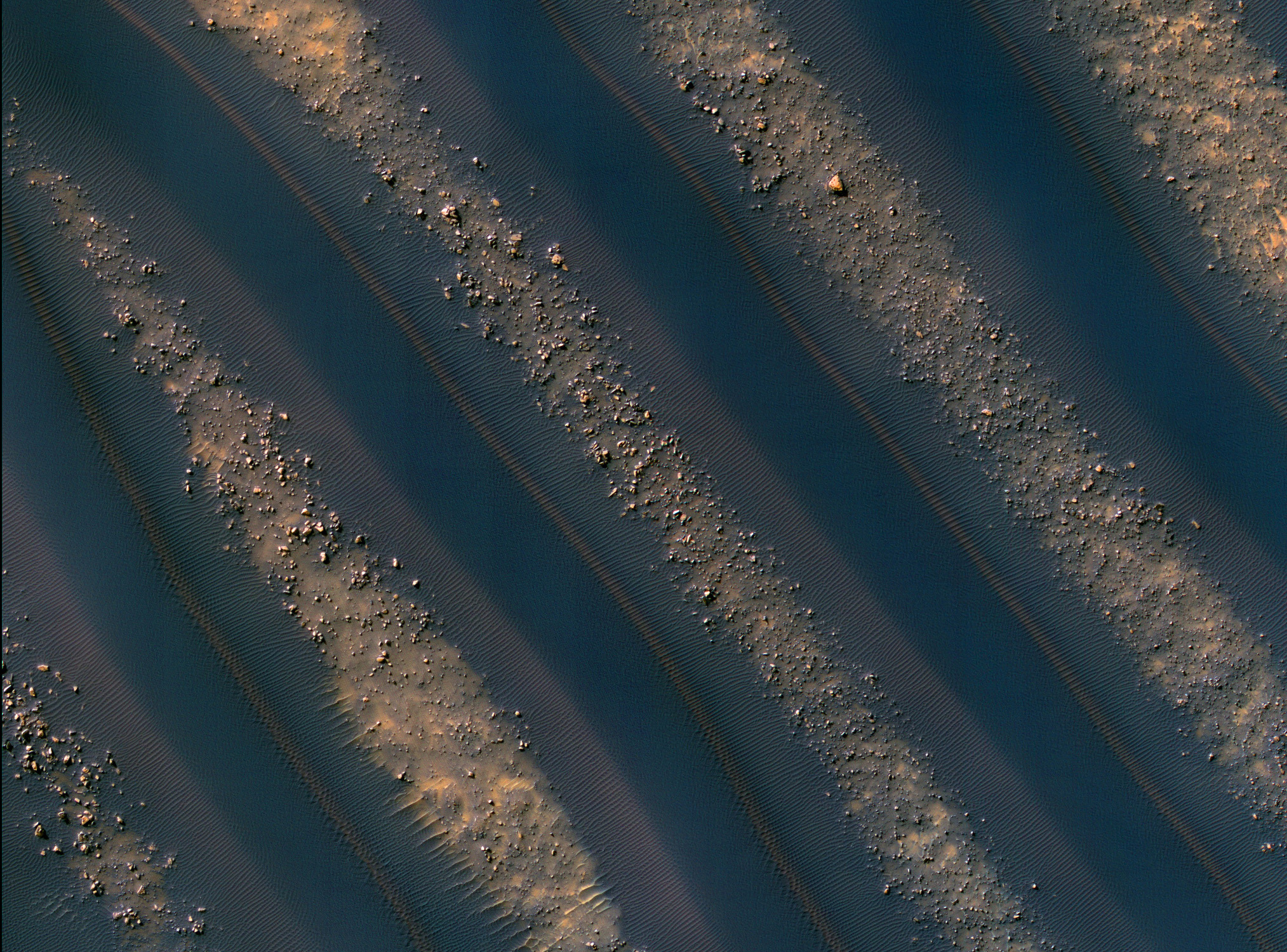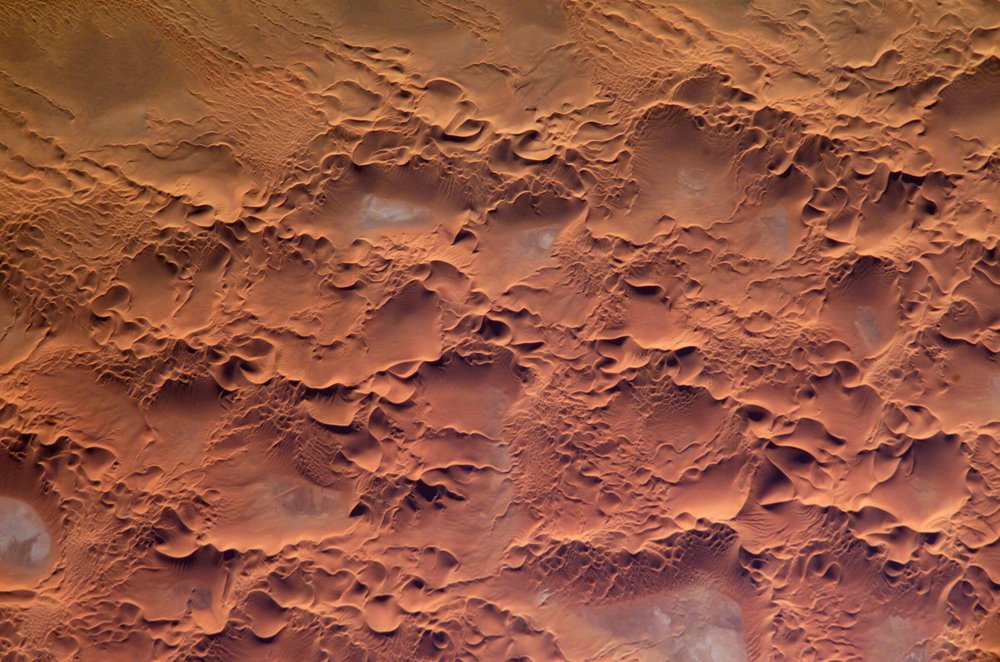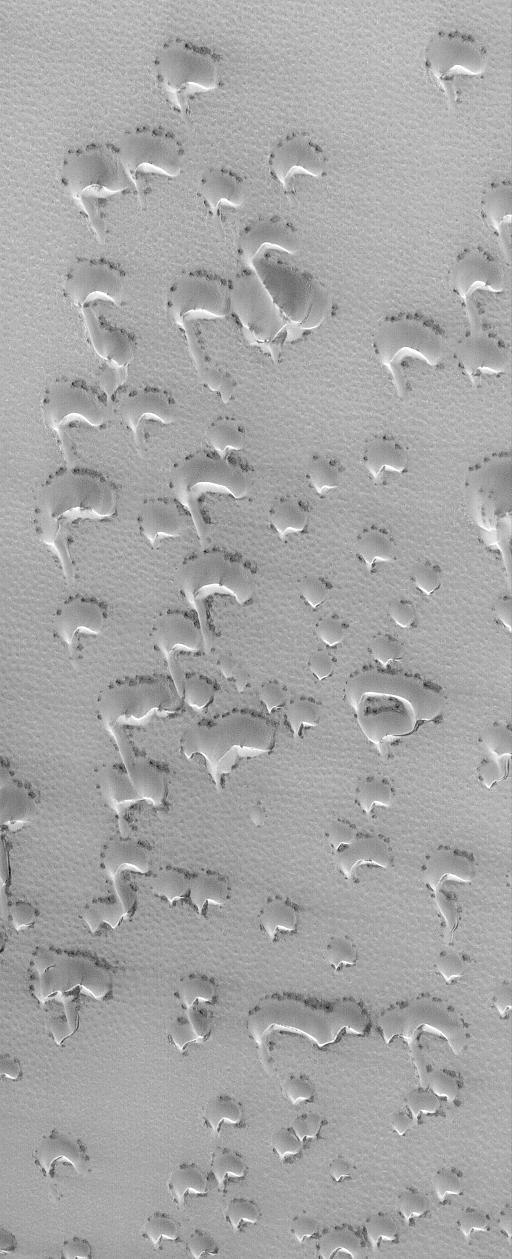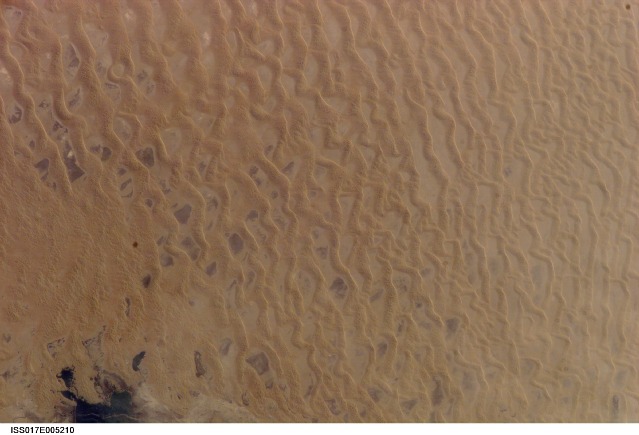 Dunes on Mars – New HiRISE Images
Dunes on Mars – New HiRISE Images
Oh the beauty that can result in faraway places untouched by human interference:

Dunes from a crater in Noachis Terra, west of the giant Hellas impact basin. Image credit: NASA/JPL-Caltech/University of Arizona
I’m getting so excited about Facing Mars coming up at Pacific Science Center. Just a little over one week to go! So, to keep myself entertained, I’ve been looking at some new Mars stuff.
The 10-Second Summary (What you need to know)
- First, click to make that picture bigger. You’ll be amazed at the detail. The boulders are in between the dunes.
- Second, dunes are common on Mars, being a planet covered in dust and sand.
- Third, Mars Orbiter (home of the HiRISE instrument) was not functioning for a while there, but it started working again – and this picture is one of the new ones (from late December 2009). HiRISE is a camera that takes some of the most detailed and breathtaking images we’ve ever seen. It can see the rovers’ tracks from orbit – it is that good.
About Dunes
There are a few basic types of dunes, and they all depend on the angle and changeability of the angle of the wind, the surrounding landscape (are there trees? mountains? bushes?), and the size of the particles that make up the dune.
Longitudinal Dunes
Longitudinal dunes tend to form parallel to the primary wind direction. The picture above from HiRISE is a perfect example of longitudinal dunes.
Star Dunes
Star dunes occur in areas with widely shifting wind directions.
Parabolic Dunes
Parabolic dunes occur in an area where the wind direction is constant, and their open side faces into the wind.
Crescent (Barchan) Dunes
Crescent or barchan dunes occur in an area where the wind direction is constant, and their open side faces away from the wind. They are very easy to confuse with parabolic dunes.
Transverse Dunes
Transverse Dunes are very similar to Longitudinal Dunes – except that they form perpendicular to the wind, not parallel. You’ve seen “dunes” like this – the waves in the sand are created by the water in the same way the wind creates these larger transverse dunes.
Want More?
The Mars Orbiter HiRISE Press Release (more detailed info on the above picture itself)
![]()
~ A l i c e !








